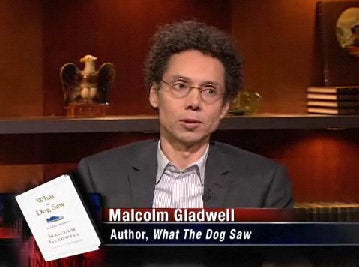
Losing socks in the wash is a universal experience. Theories abound of gremlins hiding deep inside the dryer. The Whirlpool Institute offers more prosaic explanations:
1.The sock never makes it to the washing machine in the first place. It might be under the bed.
2.In an overloaded washing machine, socks slip into the inside of the machine.
3.In the dryer, static cling pastes a sock to the inside of a shirtsleeve, pants leg or T-shirt.
Until recently, research on missing socks focused only on prevention, for example pinning socks together before washing.
In early 2006, Dr. Lucas Emil, a systems biologist, was attempting to associate an individual's DNA with the behavioral trait of carelessness. As an objective measure of carelessness he selected a person's actual and self-reported lost sock ratio (number of lost socks divided by total number washed). He assumed that the higher the lost sock ratio, the more careless the person.
Dr. Emil monitored 200 student volunteers for three months. When he received the data he could not believe his eyes. Disappointingly, he found no correlation between DNA and carelessness. But he was amazed by one statistic. Over 87% of the participants reported that they had lost socks, but astoundingly 93% of the students had actually gained socks.
Assuming there had been some mistake, Dr. Emil repeated the experiment with tighter controls and different populations and saw similar results. In all cases, over 90% of the participants gained socks in the wash, yet over 80% claimed to have lost socks.
Dr. Emil was not interested in the source of the extra socks. (This will be considered in my next book.) Rather Dr. Emil wondered why people's experiences clashed with reality. Why did they think they were losing socks when they were actually gaining socks? After pondering this question for a year and testing numerous hypotheses, Emil finally had his Eureka moment: AN UNPAIRED SOCK IS ALWAYS INTERPRETED AS EVIDENCE OF A LOSS.
He labeled this phenomenon "The Lost Sock Fallacy." Consider a person who over three months gained, from the wash, three new socks and lost one, for a net gain of two socks. This person would then possess four additional unpaired socks. He would interpret each unpaired sock as evidence of a lost sock. He would think he lost four socks rather than gained two.
In less than three years since his Emil's seminal insight, the Lost Sock Fallacy has been observed in decisions of Air Traffic Controllers, recommendations of stock analysts, and French foreign policy. The Lost Sock Fallacy has shaken the very foundations of phase transition theory, non-Elucidation geometry, and RNA nanotechnology. The Lost Sock Fallacy has forever changed capital budgeting at Fortune 500 companies, targeting systems of Submarine Based Cruise Missiles, and positioning of retailing displays.
First of a five part series.